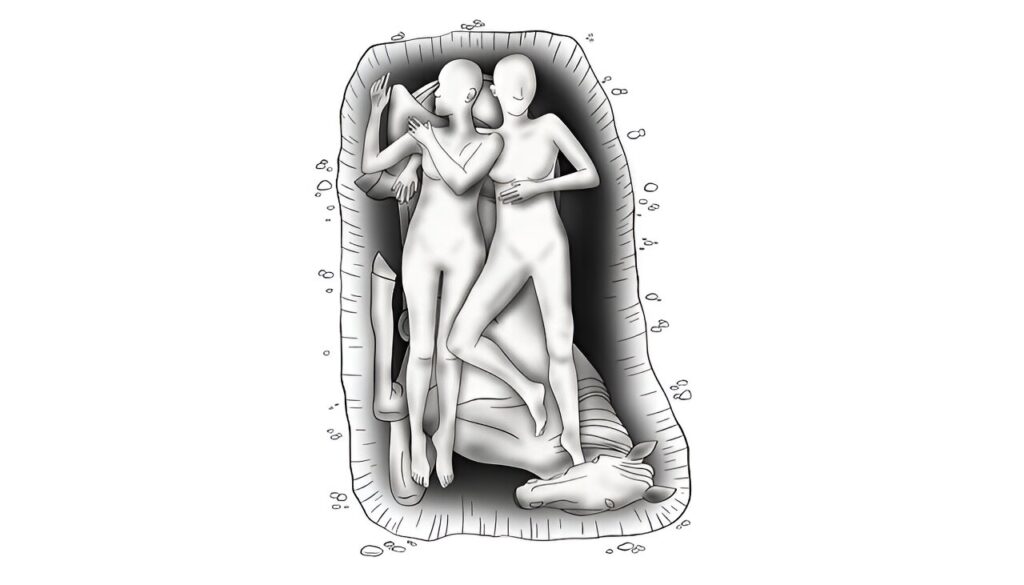A long-held archaeological mystery in Wels, Austria, has finally been unraveled thanks to advancements in bioarchaeology and archaeogenetics. A grave initially thought to be an early medieval double burial of a couple and a horse has been re-dated and reinterpreted, revealing a far more fascinating story.
The unusual grave, discovered in 2004, depicted two individuals embracing alongside the remains of a horse. This anomaly led to its initial classification as an early medieval burial. However, a new investigation spearheaded by Dr. Sylvia Kirchengast (anthropologist) and Dr. Dominik Hagmann (archaeologist) from the University of Vienna, paints a completely different picture. The results are published in the Journal of Archaeological Science: Reports.
Employing cutting-edge bioarchaeological and archaeogenetic techniques, the researchers unearthed a wealth of new information. Astonishingly, the grave was re-dated to the 2nd to 3rd century AD, placing it firmly within the Roman period in Austria – a staggering 500 years older than initially believed.
But the most sensational revelation came from the genetic analysis. Contrary to the initial assumption of a couple, the remains belonged to two biologically related females – a mother, estimated to be 40-60 years old, and her daughter, aged around 20-25. This marks the first instance in Roman Austria where aDNA analysis has definitively identified a mother-daughter burial.
“Roman burials with people buried next to horses are rare,” explains Dr. Hagmann, the study’s lead author. “However, the fact that we could genetically identify a biological mother and daughter buried together makes this an exceptional discovery.”


A combination of osteological studies, radiocarbon dating, and a meticulous examination of accompanying grave goods further solidified the new dating and interpretation. Studies of the horse remains yielded valuable insights into the burial context, while detailed analysis of the golden grave goods aligned perfectly with the revised Roman timeframe.
“Our findings conclusively demonstrate that this was a double burial of two women, most likely a mother and daughter, from the Roman period,” Dr. Kirchengast, the study director, summarizes. “While the exact reason for their joint burial remains unclear, we theorize they might have succumbed to a shared illness and were laid to rest together, potentially following a late Iron Age tradition.”
This remarkable discovery underscores the transformative power of modern scientific methods in archaeological research. By combining advanced techniques with established practices, this study has not only shed light on a long-standing mystery but has also provided valuable insights into Roman burial practices and family dynamics in Austria. The story of the mother and daughter, eternally embraced in their Roman grave, serves as a poignant reminder of the enduring human connections that transcend time.
Source: University of Vienna
